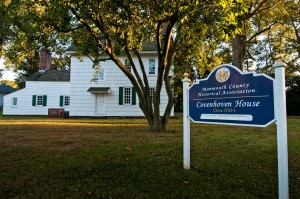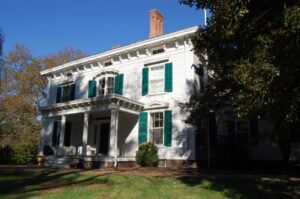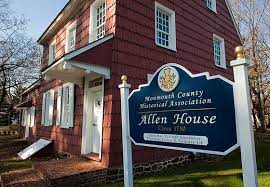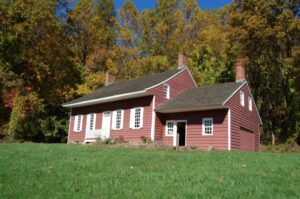Marlpit Hall
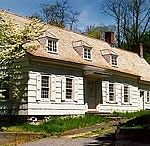 While four of the five historical houses owned by Monmouth County Historical Association have ties to Patriots of the American Revolution, this house represents the residence of a Loyalist family. Both the structure and the site are rich in historical significance. The property was laid out as lot number 36 in the original 1667 survey of Middletown village. Early owner James Grover Jr. erected the kitchen section of the structure in 1686, making it one of the oldest surviving structures in New Jersey. It was built in a salt-box shape with a large keeping room in front, and one or two smaller rooms behind.
While four of the five historical houses owned by Monmouth County Historical Association have ties to Patriots of the American Revolution, this house represents the residence of a Loyalist family. Both the structure and the site are rich in historical significance. The property was laid out as lot number 36 in the original 1667 survey of Middletown village. Early owner James Grover Jr. erected the kitchen section of the structure in 1686, making it one of the oldest surviving structures in New Jersey. It was built in a salt-box shape with a large keeping room in front, and one or two smaller rooms behind.
The house was greatly enlarged about 1762 into a center hallway residence with grandly paneled rooms on either side. The original cottage became the kitchen, and its salt-box shape determined the roof line of the new section. Edward Taylor, a brother of John, took possession of Marlpit Hall in 1771. It remained in the hands of his descendants until 1930. The Georgian-style house, reflecting the lifestyle and taste of its occupants, is furnished with fine examples of 18th century furniture, many with histories of ownership in Middletown.
During a Kings Highway realignment project in 1919, Marlpit Hall was moved back roughly thirty feet due to the energetic efforts to preserve it by Miss Mary Holmes Taylor. But gradually the house fell into decay. In 1935, Marlpit Hall was purchased by Mrs. J. Amory Haskell, a preeminent collector of early American decorative arts who lived in Middletown. Mrs. Haskell had the house restored, and in 1936 presented it fully furnished to Monmouth County Historical Association, of which she was a principal patron. It became the first historic house museum in Monmouth County to open to the public. Marlpit Hall is a key property in the Middletown Village Historic District, which is listed on the New Jersey State and National Register of Historic Places. The house is also listed on the New Jersey Women’s Heritage Trail. The Taylor family later built the Taylor-Butler House next door in 1853. MCHA owns and operates both properties as a single campus.

